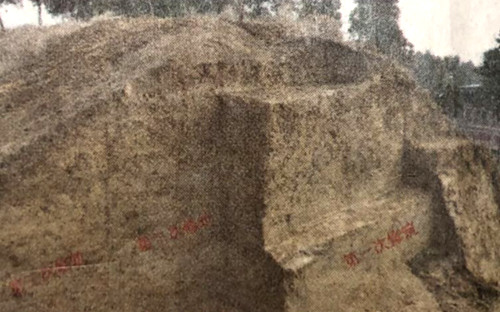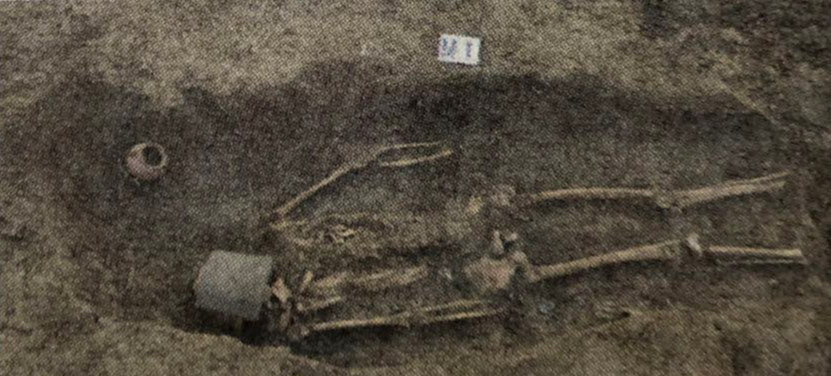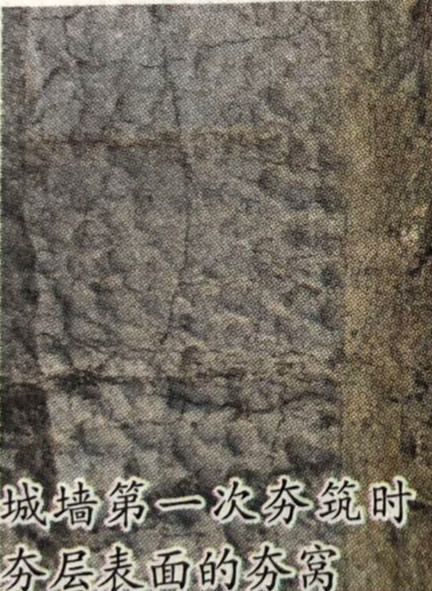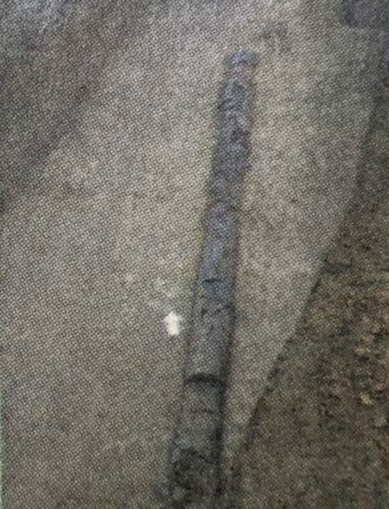Information
Excavation and Findings in Linhuan City Ruin, Anhui
Summary: From January to April 2017, the Anhui Provincial Institute of Cultural Relics and Archaeology has done a thorough archeological exploration on the ancient walls of Linhuan ancient City and has excavated a fractured section of the northeast portion of the
From January to April 2017, the Anhui Provincial Institute of Cultural Relics and Archaeology has done a thorough archeological exploration on the ancient walls of Linhuan ancient City and has excavated a fractured section of the northeast portion of the walls. The site is located 30 kilometers away southwest to Suixi county of Huaibei City, Anhui province. The north, east, and west parts of the walls were well preserved, while the south part was severely damaged. The wall is about 5802 meters long, 5 to 7 meters tall (currently). The city was surrounded by a moat except for the south side was next to a natural river channel. The moat is 4.2 kilometers long, 5 to 10 meters wide.

The city walls (it had been rammed three times,from the right to the left)
Archeological exploration on the Ancient City Walls of the Linhuan City
After a thorough exploration, we have confirmed the existence of four corner watchtowers. We have also pinpointed where the city gates are located, especially the exact location of the north gate. In addition, we have identified 8 piers being stuck to the side of the walls as bastions (mamian, a kind of defense facilities). As a result, we can extrapolate that the wall itself consists of city gates, corner watchtowers, bastions and the city wall itself.

Earthen shaft pit tomb M1
City Gates: We have primarily confirmed the location of the base for the gates in the south, west, and north. The gates are approximately 15 meters wide.
Corner watchtowers: Take the northwest corner watchtower as an example, it is 10.5 meters tall (current remains). On the corners of the watchtower, we have found remains of a slanted north-south-ward rectangular path. The path, categorized as a ramp, has a length of 29 meters and a width of 8.5 meters.
Bastions: We have found 8 poorly preserved bastions. They were mainly found on the outside of the east, west, and south walls. There are 4 of them being stuck to the west wall, 3 to the east wall, and 1 to the south wall, but we have not found any bastions on the north wall. Take the No. 2 bastion as an example, it is connected with the city walls, and the plan of the bastions appeared a ”凸” shape. The bastion connected the city wall as one, and the inner side is 71 meters wide, the outer side is 63 meters wide and 1.5 meters to 7 meters high residual.
City Walls: From analyzing the deposit and profile of the current remains, the city walls have a trapezoidal shape in cross-section. The wall body was rammed built from the ground, and the rammed earth layer was approximately more than 3.5 meters thick, which revealed that the wall has been fortified many times.
Excavation of the Fractured Northeast Portion of the Ancient City Walls of the Linhuan ancient City
Sediment Accumulation and Rammed Process of the Walls
We dug trench T1 from the east portion of the North City Wall. From the stratigraphic accumulation, the stratum is divided into 25 layers. Thus, we can infer that the city wall is built on the ground. The bottom consists of a layer of fine light-gray silt and the soil is compacted and pure. From the stratigraphic relationships and the assemblages, we conclude that the city walls had been rammed three times. The first, which is also the main one, is being done no later than Western Han Dynasty. The second and the third one were done no earlier than Western Han Dynasty.

Rammed hole left when first ramming
Important Remains
A dissection of the walls allows us to discover that the city walls mainly consists of ramming layers, rammed surfaces, and rammed bases. The main body of the city wall is rammed made. The rammed bases are cylindrical with diameter of 5 to 8 centimeters, and they are divided in groups of 3 to 5. Aside from the discoveries of the city walls, we have also found three tombs and one drainage system. The drainage system is perpendicular to the city walls. It composes of 12 pipes. The cylindrical pipes were made of grey clay, and it is decorated with cord patterns. Each pipe has a length of 53 centimeter and a diameter of 34 centimeters. The drainage system is surrounded by rammed earth and the system plays an important role in the protection of the city walls. Through further investigation, this type of drainage system is an auxiliary facility of the city wall and it should exist in various places in the city.

Clay water pipe
Through excavation, we also found 3 tombs. M1 and M2 dates back to the Qing Dynasty. These two tombs are earthen shaft rectangular pit tombs, with the individual’s body lying straight, facing up. His or her face is being covered with tile. Burial objects include copper earrings, red glazed double-eared porcelain pot, etc. M3 is an urn burial, situated in the south of the trenches. The utensil is a clay trough which is covered by a cord pattern tile. There are a few skull fragments left and there were no any burial objects. Thus, we can infer that it is a child urn-burial, dating it back to no later than Han dynasty. This urn-burial is possibly related to some kind of sacrificial activity during the construction of the wall.
Academic Significance
The ancient Linhuan City, in historical records, is an important city site for both the Qin and the Han dynasty. In addition, it is one of the most well preserved ancient city of Qin and Han Dynasty. Through archeological excavation and investigation, we are able to not only establish a basic understanding of the city wall’s stratigraphic accumulation, but also to acquire new knowledge about its structures, its age and the method employed to build it. The new perspectives on these city walls provide practical evidence for the research on the city site of the Qin, the Western Han and Eastern Han Dynasties. (Translator: Cynthia Ji Photo:ccrnews)

The city walls (it had been rammed three times,from the right to the left)
Archeological exploration on the Ancient City Walls of the Linhuan City
After a thorough exploration, we have confirmed the existence of four corner watchtowers. We have also pinpointed where the city gates are located, especially the exact location of the north gate. In addition, we have identified 8 piers being stuck to the side of the walls as bastions (mamian, a kind of defense facilities). As a result, we can extrapolate that the wall itself consists of city gates, corner watchtowers, bastions and the city wall itself.

Earthen shaft pit tomb M1
Corner watchtowers: Take the northwest corner watchtower as an example, it is 10.5 meters tall (current remains). On the corners of the watchtower, we have found remains of a slanted north-south-ward rectangular path. The path, categorized as a ramp, has a length of 29 meters and a width of 8.5 meters.
Bastions: We have found 8 poorly preserved bastions. They were mainly found on the outside of the east, west, and south walls. There are 4 of them being stuck to the west wall, 3 to the east wall, and 1 to the south wall, but we have not found any bastions on the north wall. Take the No. 2 bastion as an example, it is connected with the city walls, and the plan of the bastions appeared a ”凸” shape. The bastion connected the city wall as one, and the inner side is 71 meters wide, the outer side is 63 meters wide and 1.5 meters to 7 meters high residual.
City Walls: From analyzing the deposit and profile of the current remains, the city walls have a trapezoidal shape in cross-section. The wall body was rammed built from the ground, and the rammed earth layer was approximately more than 3.5 meters thick, which revealed that the wall has been fortified many times.
Excavation of the Fractured Northeast Portion of the Ancient City Walls of the Linhuan ancient City
Sediment Accumulation and Rammed Process of the Walls
We dug trench T1 from the east portion of the North City Wall. From the stratigraphic accumulation, the stratum is divided into 25 layers. Thus, we can infer that the city wall is built on the ground. The bottom consists of a layer of fine light-gray silt and the soil is compacted and pure. From the stratigraphic relationships and the assemblages, we conclude that the city walls had been rammed three times. The first, which is also the main one, is being done no later than Western Han Dynasty. The second and the third one were done no earlier than Western Han Dynasty.

Rammed hole left when first ramming
Important Remains
A dissection of the walls allows us to discover that the city walls mainly consists of ramming layers, rammed surfaces, and rammed bases. The main body of the city wall is rammed made. The rammed bases are cylindrical with diameter of 5 to 8 centimeters, and they are divided in groups of 3 to 5. Aside from the discoveries of the city walls, we have also found three tombs and one drainage system. The drainage system is perpendicular to the city walls. It composes of 12 pipes. The cylindrical pipes were made of grey clay, and it is decorated with cord patterns. Each pipe has a length of 53 centimeter and a diameter of 34 centimeters. The drainage system is surrounded by rammed earth and the system plays an important role in the protection of the city walls. Through further investigation, this type of drainage system is an auxiliary facility of the city wall and it should exist in various places in the city.

Clay water pipe
Through excavation, we also found 3 tombs. M1 and M2 dates back to the Qing Dynasty. These two tombs are earthen shaft rectangular pit tombs, with the individual’s body lying straight, facing up. His or her face is being covered with tile. Burial objects include copper earrings, red glazed double-eared porcelain pot, etc. M3 is an urn burial, situated in the south of the trenches. The utensil is a clay trough which is covered by a cord pattern tile. There are a few skull fragments left and there were no any burial objects. Thus, we can infer that it is a child urn-burial, dating it back to no later than Han dynasty. This urn-burial is possibly related to some kind of sacrificial activity during the construction of the wall.
Academic Significance
The ancient Linhuan City, in historical records, is an important city site for both the Qin and the Han dynasty. In addition, it is one of the most well preserved ancient city of Qin and Han Dynasty. Through archeological excavation and investigation, we are able to not only establish a basic understanding of the city wall’s stratigraphic accumulation, but also to acquire new knowledge about its structures, its age and the method employed to build it. The new perspectives on these city walls provide practical evidence for the research on the city site of the Qin, the Western Han and Eastern Han Dynasties. (Translator: Cynthia Ji Photo:ccrnews)
Category: English
News
Information
Key words:
